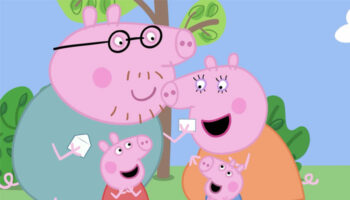The life of The Game of Life

Victor Caddy – Trade Mark Attorney at Wynne-Jones IP – looks at a recent case involving The Game of Life that had the potential to shake up the “instance and expense” rule around copyrights.
Have you ever wondered how the law works? Probably not. But, if not, you are lucky. It’s the kind of thing that keeps me up a night.
With law, the world divides into two – countries with common law and countries without it.
In countries without common law, everything depends on statute. In other words, the government creates law by setting it down in writing in the statute book, and the job of the courts and the judges is to apply it. It’s a system that creates clarity and certainty, but possibly also rigidity and inflexibility.
In common law countries, judges are able to make up certain aspects of the law as they go along. This can result in law without a corresponding statute at all – such as passing off in the UK – or handy rules and guidelines for interpreting the more woolly parts of statute. In a common law jurisdiction, you may not always know where you stand, but, theoretically at least, the law may move with the times and not simply be a blunt instrument.
The USA, like the UK, is a common law jurisdiction, and it just so happens that a case with potentially far-reaching consequences for both the toy and licensing industries – and with an issue of common law at its heart – recently reached the US Supreme Court.
The case concerned Hasbro’s The Game of Life.
The High Life
The Law in this case is a bit convoluted, but, fortunately, we only need to concern ourselves with a few key points.
Firstly, the modern version of The Game of Life is subject to US copyright law dating from 1909. During the 1960s, judges devised a way of interpreting the 1909 law, in so far as it relates to copyright ownership, according to what became known as the “instance and expense” rule. This is common law in action.
Under this rule, ownership of copyright in an independent contractor’s creative work is deemed to vest with the entity that provided the impetus and funding for the work, not with the contractor.
The 1909 law was then replaced by the US Copyright Act of 1976. The 1976 Act allows for the reversion or termination of transfers of copyright. It brought the “instance and expense” rule centre stage because, potentially, it allows creators to conditionally reclaim copyrights they had signed away decades earlier – but only if they can get around the rule.
As common law is not enshrined in statute, things like the “instance and expense” rule are open to continual development and reappraisal. Thus, in 1989, the US Supreme Court ruled that the “instance and expense” rule does not apply to newer commissioned works. However, it did not say what the position is for older works, specifically works created before 1978, like The Game of Life.
The Game of Life case is a test case for whether or not the rule applies to older works.
The Facts of Life
The Game of Life has had a long and entertaining… life.
It was created in 1860 by Milton Bradley, and modernised in time for its centenary in 1960 by Reuben Klamer and Bill Markham. Klamer and Markham – along with TV personality Art Linkletter – pitched it successfully to board game manufacturer Milton Bradley. Under the latter’s stewardship it became a hit.
The agreement with Milton Bradley was actually with Klamer and Linkletter’s company, Link Research. It gave Milton Bradley the exclusive right to make and sell the game, and ascribed a portion of the royalties to Markham, as well as paying him to produce the prototype… Although Milton Bradley altered the prototype with Klamer and Linkletter’s input.
Milton Bradley registered copyrights in the game board and rules in 1960 – copyright registration is a “thing” in the US – while Link Research registered a copyright in the game’s box, which identified Milton Bradley as its author.
Hasbro acquired Milton Bradley in 1984. In 2015, they were sued by the heirs of Bill Markham, who wanted to reclaim the copyright in the modern version of the game.
The Circle of Life
The Game of Life case reached round three. In round one, a U.S. District Judge ruled that the “instance and expense” rule applied and, because Klamer “provided the instance for and bore the expense of the prototype’s invention,” Markham’s heirs lacked termination rights in the copyright. In round two, the 1st U.S. Circuit Court of Appeals agreed. Last week, it was the turn of the US Supreme Court in round three.
Game On
Markham’s heirs wanted the Supreme Court to reappraise the “instance and expense” rule and replace it with guidelines that are more favourable towards contractors, like hired creators. They were backed by entertainment attorneys, an entertainment industry union, and public interest groups, who say the rule is unfair on creators because it wrongly assumes the funding party bears all the risk, disregarding time and resources put in by the creator. They also point out that creators often lack bargaining power at that stage in the process.
Conversely, Hasbro and others like them potentially have an interest in maintaining the status quo because they have a lot of copyright interests on the line. If the “instance and expense” rule was to be altered, the rationale of funding models for creative projects could change dramatically.
Life Goes On
Hasbro can breathe easy. The US Supreme Court turned down the petition by Markham’s heirs, meaning that it will not step in and alter the “instance and expense” rule.
This marks the end of a seven-year legal challenge by Markham’s heirs, but the issue may not go away just yet. A change in the “instance and expense” rule could have impacted other old board games that are still on sale, and other creative projects involving older content, such as comic characters and storylines that are still being used in movies and TV shows. Indeed, only last September, Disney’s Marvel Characters, Inc. filed lawsuits against copyright termination notices issued by a variety of writers and artists. These cases concern the same principle of US copyright law.
I await future cases with interest and more sleepless nights. It could be life changing.
–
To stay in the loop with the latest news, interviews and features from the world of toy and game design, sign up to our weekly newsletter here


























